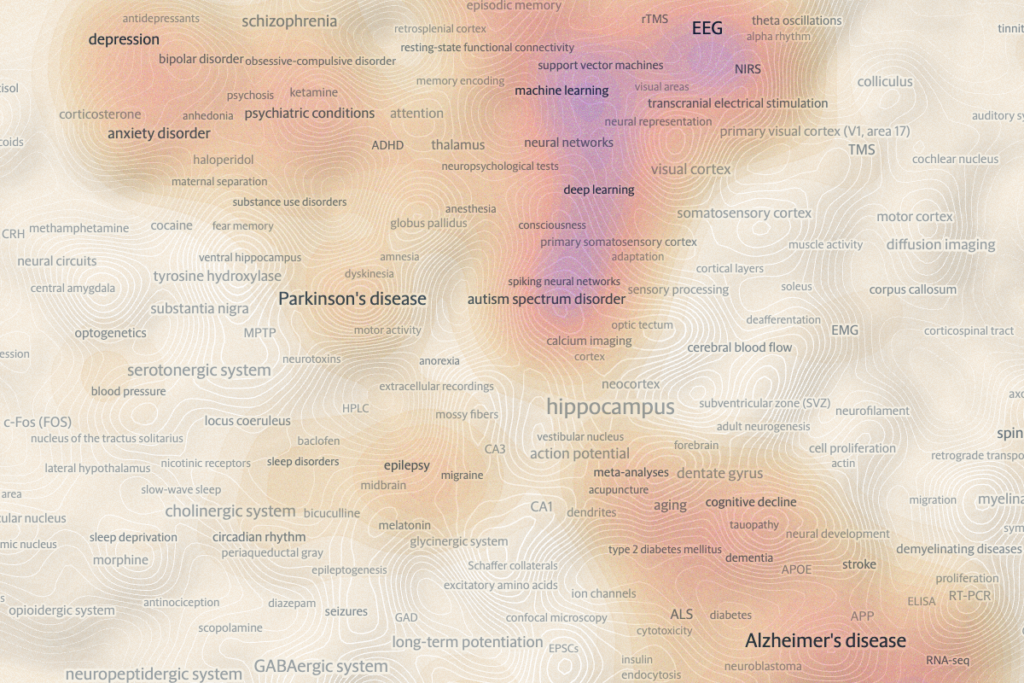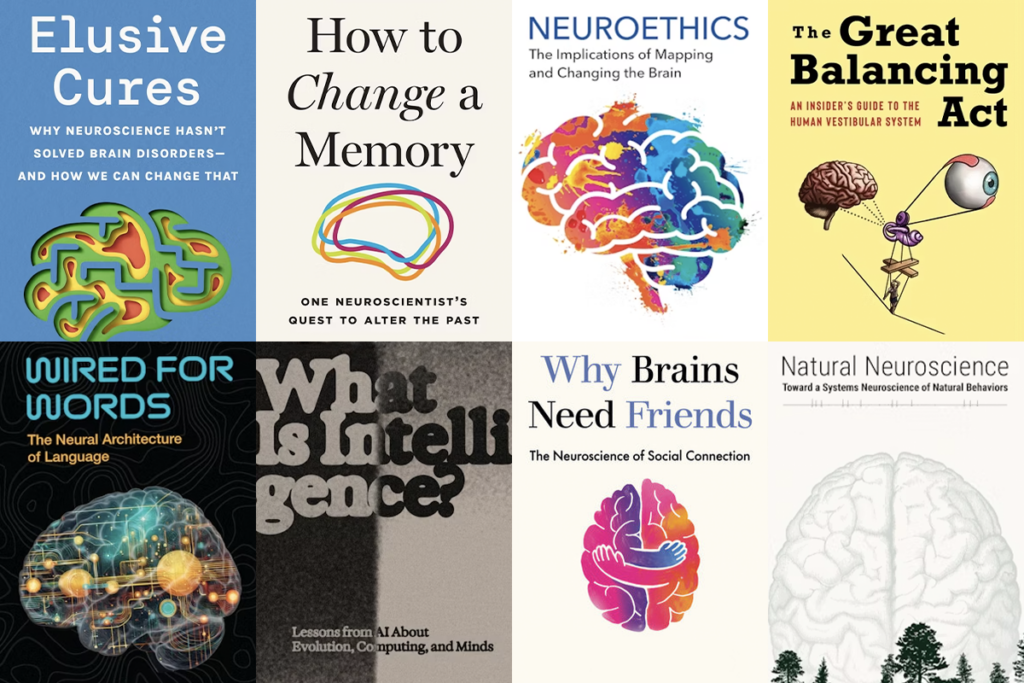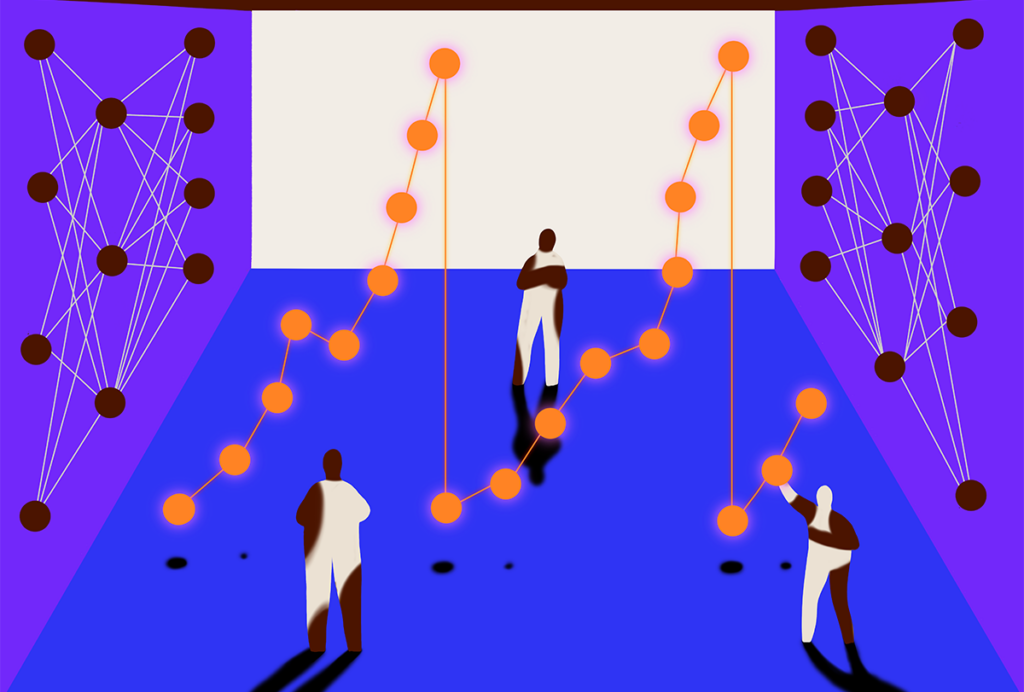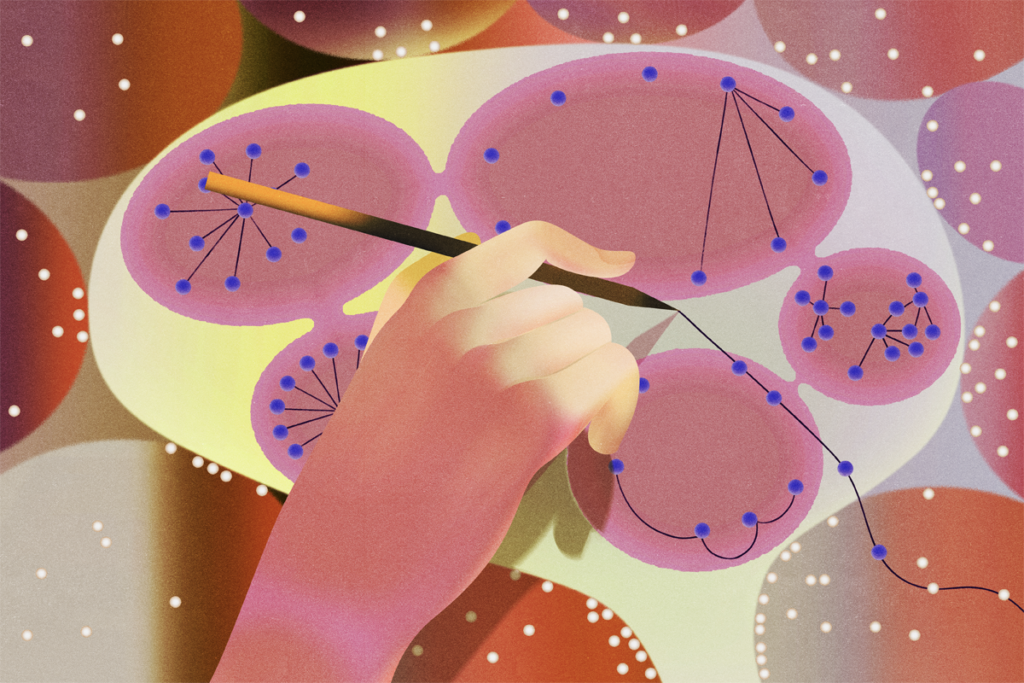Citations are an imperfect measure of scientific value, but they can provide a snapshot of papers that have proved impactful over time. Some highly cited papers put forth useful techniques or scintillating new results. Others provide fodder for debate. They all reflect research areas that scientists have been excited about at some point in time.
The Transmitter gathered citation metrics for the top neuroscience papers published over the past 30 years and assembled a list of the top 20 to try to capture a different view of the field’s changing landscape. To incorporate recent work that hasn’t had time to amass top-20-level counts, we also created lists of the top-five cited papers for each of the past five years.
Together, the lists surface a number of pivotal advances. As our surveys make clear, work in artificial intelligence, and computational neuroscience in general, has exploded over a relatively short span of time: Here, too, the top two most-cited neuroscience papers are both less than a decade old and concern an AI’s ability to master the game Go, outperforming a human professional player and earlier versions of itself. The last author on both papers, Demis Hassabis, co-founder and CEO of GoogleDeepMind, won the Nobel Prize in Chemistry in 2024 for his work on AlphaFold, applying AI to predict protein structure.
Work with translational potential also collected high citation numbers—a clinical bias that is also apparent in our interactive trends map. The third paper on the list, describing efforts that earned last author David Julius the Nobel Prize in Physiology or Medicine in 2021, helped define the mechanism of action and new targets for analgesic drugs. The paper at No. 14 first identified TDP-43 as a protein of interest in amyotrophic lateral sclerosis; No. 6 revealed how the serotonin transporter gene moderates the impact of stress in depression; and two papers from the past five years examine the effects of SARS-CoV-2.
Research detailing brain structure and brain networks features prominently on these top citation lists, too. No. 10, which describes findings that earned last author Roderick MacKinnon the Nobel Prize in Chemistry in 2003, offers a deep dive into the structure of the potassium channel. The paper at No. 7 shows that the fusiform gyrus area of the brain activates strongly when participants view a human face versus control—work that earned first author Nancy Kanwisher last year’s Kavli Prize. And the No. 9 paper demonstrates that salience and executive function networks, though often coactivated, are distinct; first author William Seeley received a MacArthur “Genius” grant in 2011. Still other papers mark important technical leaps, including Neuropixels 2.0, brain-computer interfaces and the Allen Brain Mouse Brain Common Coordinate Framework.
To generate the lists, we used a dataset—created by Dennis Vasquez Montes, a research data analyst at the Simons Foundation—of papers published in 12 leading journals between 1994 and 2024 indexed in PubMed. (The journal names are included below, beneath the final citation list; The Transmitter is editorially independent of but supported by the Simons Foundation.) Vasquez Montes obtained the papers’ metadata through the Entrez Programming Utilities provided by the National Center for Biotechnology Information. He also excluded papers that could not be linked to Semantic Scholar via DOI, PMID or PMCID, and used Google Gemini to exclude papers unrelated to neuroscience based on the title and abstract. The Transmitter’s editorial team removed additional outliers by hand. He obtained citation data for each paper through Semantic Scholar’s application programming interface.
We plan to draw on this dataset again for future coverage, but in the meantime, read on to see how many of the top highly cited papers you are already familiar with.






